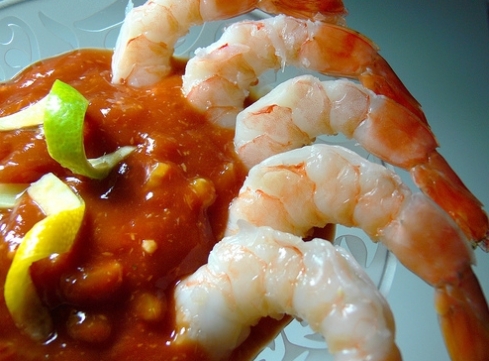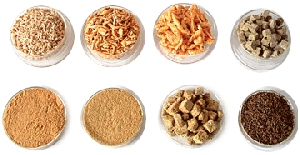You are currently browsing the tag archive for the ‘aquaculture feedstuffs’ tag.
The information contained in this report is very important to modern aquaculture and the Island Bounty SA objective:
Research Project: TROPICAL AQUACULTURE: DEVELOP FEEDS FOR OPTIMUM NUTRITION OF CULTURED SHRIMP AND FINFISH
Location: Tropical Aquaculture Research| 2005 Annual Report
End Date: Jan 25, 2010
Aquaculture feed needs to be consistent with what we are trying to sell the the people; the end consumer. It is a fact: “we are what we eat.”
Shrimp and other products made in aquaculture raceways will become what we mold them to be. If the live product is fed too much corn meal we see a higher level of Omega 6 fatty acids.
Lower the corn meal in the feed and implement higher quality meal consistent with Omega 3 fatty acid and we see higher levels of the “good cholesterol.”
Feeding with fish meal saturated with the right antioxidants promotes not only good health and growth in shrimp , but a healthier product to the end consumer. This has been proven through research.
The Island Bounty approach is to take the best feed program that exists in the aquaculture industry (we have it already), then increase certain nutriments and test the animals at harvest.
Traditionally, many aquaculture farmers feed their stock what they can buy locally and at a good price. The farmers are only really concerned with increased weight and not quality of the nutriments you will receive while eating their product.
It is our firm conviction that we can achieve both in a happy medium. Good fast growth and a quality, healthy, consumable product. A product which contains better levels of nutriments than industry standards.
This will take continued research and quantifiable testing measures. We do believe, after comparing studies, the data can be obtained to assist us in our nutritional marketing, maintaining good health in our product, and passing on the benefits of healthy, clean, aquaculture practices on to our consumers, while aiding the world food crisis.
Aquaculture Research Details:
Start Date: Jan 26, 2005
End Date: Jan 25, 2010
Objective:
Problem to be Addressed: A critical need and unique opportunity to address the feasibility of locally produced feeds for the aquaculture industry.
Develop a cooperative effort towards the goal of establishing long-term sustainability of the aquaculture industry. Objective 1: Define the nutrient requirements of aquaculture species in the state, especially the Pacific threadfin, longfin amberjack, and Pacific white shrimp. Objective 2: Identify and test regionally available plant and animal by-products for their nutritional composition and bioavailability in aquaculture feeds, and produce nutritionally complete diets for evaluation. Objective 3: Test the effectiveness of the produced feeds on commercial scale through collaborations with University and commercial partners.
Research Project: Tropical Aquaculture: Develop Feeds for Optimum Nutrition of Cultured Shrimp and Finfish Project Number: 5320-31000-007-00
Project Type: Appropriated
The issue of feed ingredients is among the top challenges facing the global aquaculture industry. The protein-rich feed pellets used in aquaculture are made in part from small, bony fish species including herring, menhaden, anchovy, and sardines.
These species, harvested worldwide for use in fish meal and fish oil, are under increasing commercial fishing pressure. Fish meal and fish oil are principal feeds ingredients for cultured fish species including carp, shrimp, salmon, tilapia, trout, and catfish, as well as poultry and pigs.
As ingredients in aquaculture feedstuffs, fish meal and fish oil supply the essential amino acids and fatty acids required for normal growth.
In the U.S. and elsewhere, studies are underway to better understand the nutritional requirements of fish and shrimp and to evaluate the use of alternative dietary ingredients in aquaculture feed, including soybeans, barley, rice, peas, and other crops along with canola, lupine, wheat gluten, corn gluten, various plant proteins, algae, and seafood processing by-products.
Groundbreaking research on alternative dietary ingredients (feedstuffs) for aquaculture, including plant based proteins, is expanding in the United States and worldwide.


